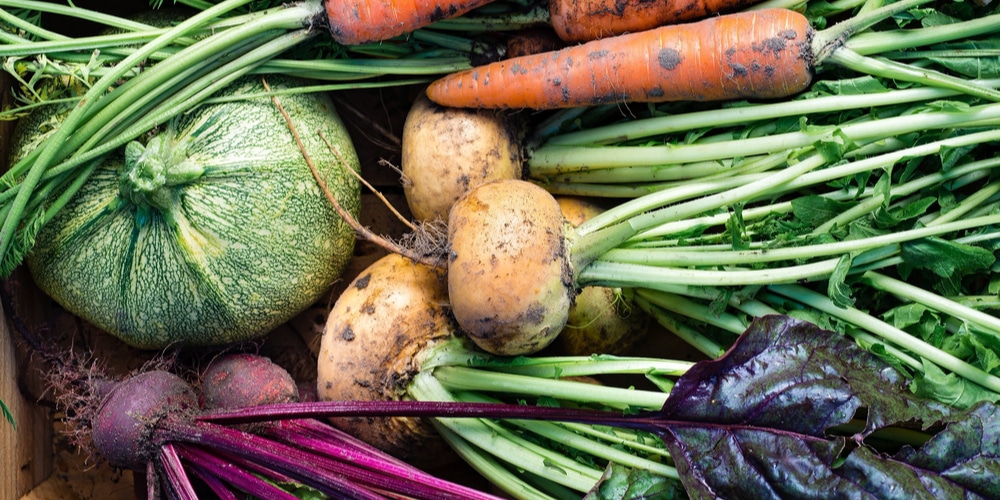Autumn is a fantastic time to plant vegetables in Virginia! The weather is cool and perfect for growing many different types of crops.
This article will discuss some of the best vegetables to plant in the fall. If you are looking for something new to add to your garden, be sure to try out these plants!
Virginia’s Hardiness Zone
Hardiness zones are essential for gardeners because they help to determine which plants will survive in their climate. If a plant is not well-suited for a gardener’s hardiness zone, likely, the plant will not survive the winter.
Virginia is located in hardiness zones 6a through 8a.
This means the state experiences a wide range of temperatures, from hot summers to cold winters. As a result, gardeners in Virginia need to be aware of which plants are best suited for their particular climate.
What Are The Best Fall Vegetables To Plant In Virginia?
Many different types of vegetables can be planted in the fall, but some are better suited for the climate than others. Here are some of the best vegetables to grow in Virginia:
Beets
Fall is the perfect time to plant beets in Virginia. The cool weather helps the roots to develop a deep, rich flavor, and the leaves are less likely to bolt (go to seed). Beets can be planted as early as two weeks before the average first frost date in Virginia and can be harvested through the winter.
Broccoli
Broccoli is an excellent option if you’re looking to add some fall color to your garden. This cool-weather crop thrives in temperatures between 60 and 65 degrees Fahrenheit, making it one of the best vegetables to plant in Virginia in late summer or early fall.
Broccoli is a heavy feeder, so make sure to amend your soil with compost or manure before planting. Once your plants are established, water them regularly and fertilize them every few weeks to ensure optimal growth.
Cabbage
Cabbage is a hearty vegetable that can tolerate cold temperatures, and it will taste sweeter if it is exposed to a few frosty nights. Cabbage is also relatively low-maintenance, so you won’t have to spend much time caring for it.
When planting cabbage, be sure to choose a spot that gets full sun and has well-drained soil. You should also space the plants about 18 inches apart, as they will grow quite large.
Chinese Cabbage
Chinese cabbage is a fast-growing crop that is relatively easy to care for. It prefers full sun but will also do well in partial shade. The soil should be fertile and well-drained.
Chinese cabbage can be susceptible to root rot, so it is essential to avoid over-watering. They are ready to harvest when the heads are about 6-8 inches in diameter.
Cauliflower
Cauliflower is a versatile ingredient that can be used in a variety of dishes. When choosing a cauliflower for your garden, look for a variety that is compact and uniform in size. Planting depth should be approximately 1 inch deep, and spacing should be 18-24 inches apart.
Kale
This leafy green is tolerant of cold weather and can even withstand a light frost. Kale is an excellent source of vitamins A, C, and K. When planting kale, choose a sunny spot with well-drained soil.
Leeks
Leeks are a member of the onion family and have a milder, sweeter flavor than their cousins. They’re also incredibly versatile – they can be used in soups, stews, casseroles, and baked goods. Plus, they’re packed with nutrients like Vitamin C and iron. Best of all, they’re easy to grow – even in colder climates.
Lettuce
Though we typically think of lettuce as a spring or summer vegetable, it can be pretty successful when planted in the fall. Fall is the best time to plant lettuce in many parts of the country because the cooler temperatures make it less likely to bolt. Lettuce allowed to bolt is usually bitter and tough, so avoiding this by planting in the fall is key.
Mustard
These nutrient-rich leafy greens grow best in cool weather, so planting them in the fall gives them a chance to develop their flavor before the weather gets too cold. Mustard greens are also quite hardy, so they can withstand a light frost and still produce a tasty crop.
Radish
Radishes are one of the fastest-growing vegetables, so they’re perfect for gardeners who want to see results quickly. They can be planted as early as two weeks before the average first frost date. Radishes come in various shapes, sizes, and colors, so there’s sure to be one perfect for your garden.
Fall Vegetables to Plant in Virginia: Final Thoughts
These are just a few of the best vegetables to plant in Virginia in the fall. With a bit of planning, you can have a thriving garden that provides fresh produce all season long.




